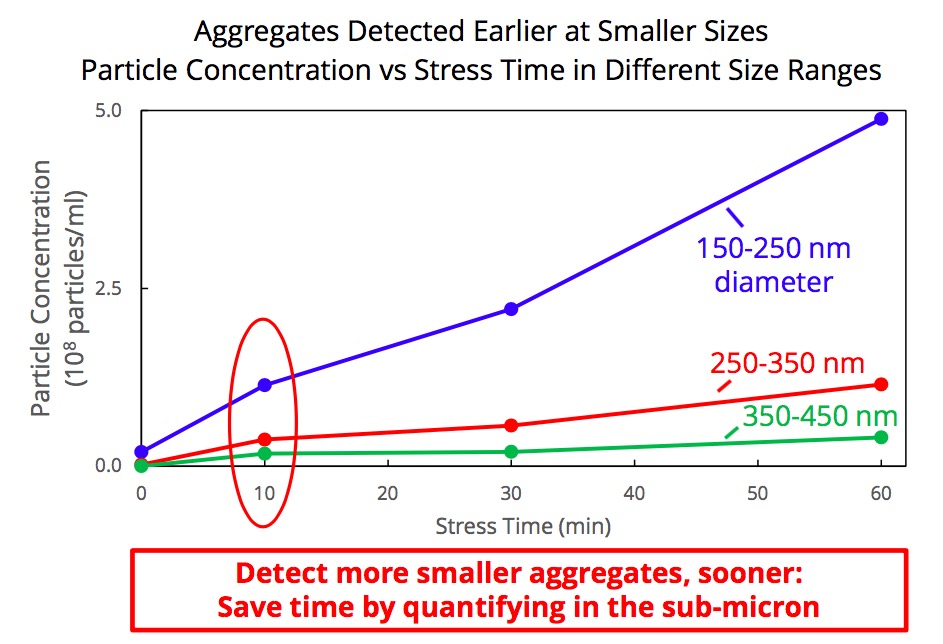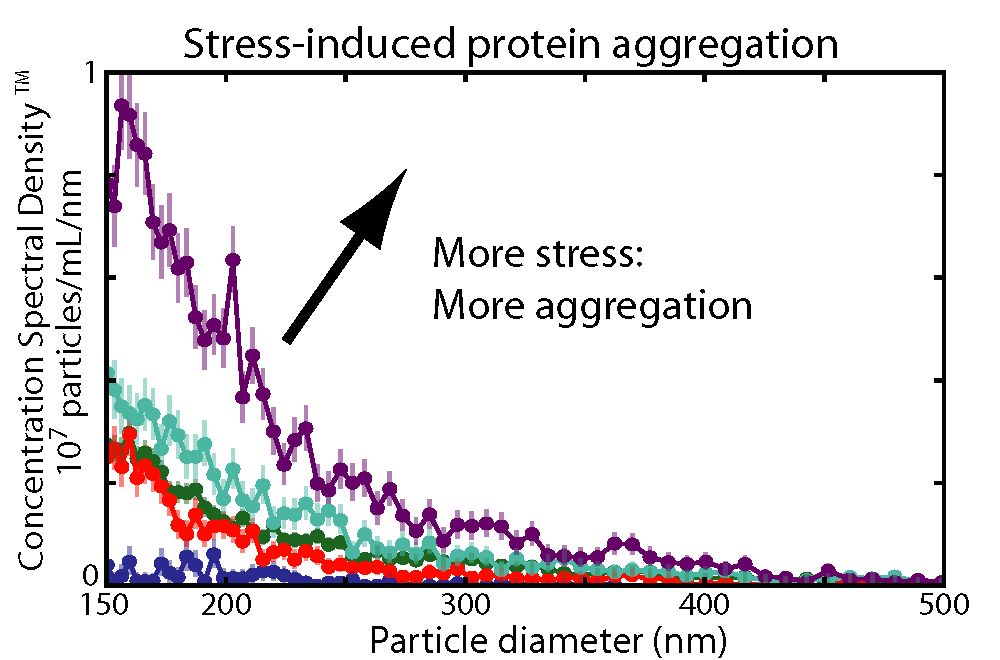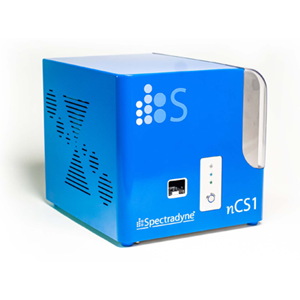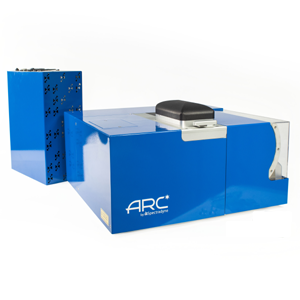Protein aggregation
Spectradyne's nCS1 delivers two significant advantages for detecting aggregates in protein solutions: First, individual particle measurements (no ensemble-averaging) deliver accurate size distributions in highly polydisperse samples such as these. Second, the non-optical electrical detectionmethod ensures that protein aggregates, which are low-index contrast materials, are accurately represented in the distribution.
Particulates in parenteral drug development and production have always been a serious issue. In biologics, the issue is compounded by reported impacts of aggregates and particles on the product's efficacy, safety and immunogenicity. FDA regulations strongly recommend in-depth characterization of the identity and quantity of particles in protein therapeutics.
While regulations require measurement of larger particles (>1 μm), it is desirable to detect and characterize protein aggregates long before they are that large. Crucial decisions about formulation, processing, storage conditions, etc. must be made with an eye towards minimizing protein aggregation throughout the drug life-cycle.
Spectradyne's nCS1TM
Spectradyne's nCS1 is ideally suited for accurate quantification of submicron protein aggregates. The figure below demonstrates the power of the nCS1 to quantify protein aggregation in real world samples. Five formulations that had been stressed to varying degrees (0, 10, 20, 30, and 60 minutes) were provided by a large biopharmaceutical customer and analyzed "as received" on the nCS1 - no dilution or additives were required. The range of concentrations measured by the nCS1 spanned over four orders of magnitude in this instance. The quantitative results clearly show that increased stress causes more aggregates in this formulation.
Spectradyne's ARCTM
Spectradyne's ARC combines the MRPS functionality of the nCS1 with a fluorescence detection capability, allowing the fast and rapid detection of fluorescent tags combined with the accurate sizing and concentration measurements provided by microfluidic resistive pulse sensing (MRPS). This adds an extra dimension to your nanoparticle and protein aggregate detection capability.
Spectradyne's nCS1 enables earlier detection of smaller aggregates
Aggregates appear in protein formulations after even brief exposure to stress. Spectradyne's nCS1 can detect these aggregates earlier and at smaller diameters than other techniques, saving time and money in developing stable formulations.







